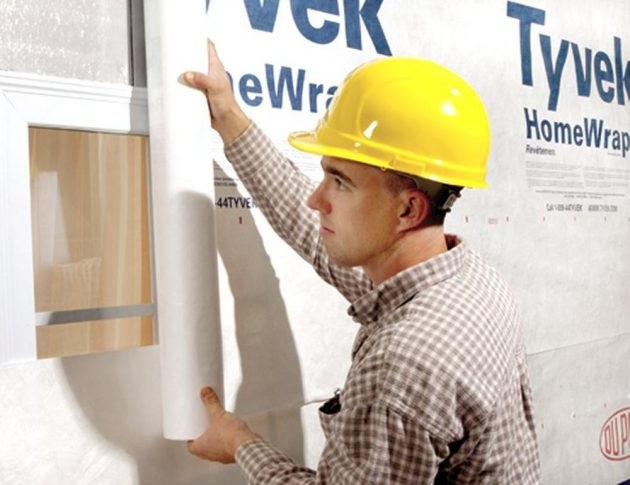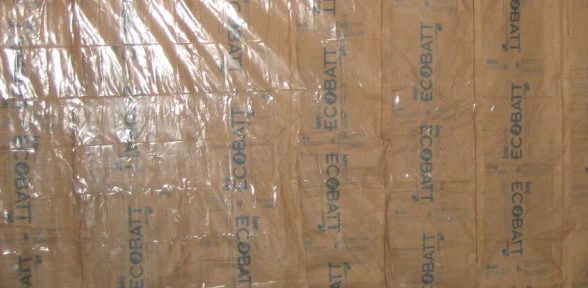Moisture is one of a builder’s biggest concerns. Water can damage wood, ruin structural integrity and even cause toxic mold which can lead to severe health problems. The good news is with weather and vapor barriers acting as your mold prevention, you will be well on your way to a safe, happy, dry environment.
Although these two terms are sometimes confused and used in place of one another, here are the details on the differences and how they work.*
Weather Barrier

Also known commonly as water barrier or house wrap, weather barrier provides two functions to the house. It keeps bulk water (such as the weather) out of your home and at the same time, the semi-permeable material allows water vapor to escape from the inside of your home. This barrier is always located on top of your sheathing and beneath your exterior siding/paneling. Back in the old days, tar paper was used to prevent water intrusion, but the paper does not act as an air barrier (which weather barrier is also sometimes referred to), is hard to manipulate, and because of the weight and the shortness of the rolls, takes considerably more labor to apply. The material that we recommend to use is called "Tyvek" and is available at most big box stores. Please make sure that the type you buy is definitely labeled “Tyvek" because many people will try to pass off their generic or store brand as the same thing which it is clearly not.
Vapor Barrier

You will occasionally hear vapor barrier referred to as vapor retarder, and although they are close to the same thing, their blocking abilities are different. Vapor barrier is normally a sheet of plastic that is placed between the interior sheathing (sheet rock, tongue and groove panels, etc.) and the studs. It’s job is to keep the moist air that is in your house away from the cold surface that is in your wall, because when that warm air hits the cold, the dew point drops and forms condensation. Condensation in your walls equals mold which is not good. The more of a difference between the inside temperature and the outside temperature, the more important the vapor barrier becomes. In most places plastic is the norm. But if you head to the South where the inside and outside temps are closer together, you will find that the craft paper backing of the insulation is actually enough of a barrier to hold back the moisture. This is called a vapor retarder and it acts in the same way, but obviously has less of an impact where the heavier guard is not as necessary. These two barriers are your biggest protectors against the moisture. When coupled with your properly installed roof and flashing, you will be able to bring your dog in out of the rain and cozy up with him or her on your dry, comfy couch. *Climate conditions vary across the country and around the world. Vapor and weather barriers and their qualities vary along with them. Please seek out climate information for your area before beginning construction.